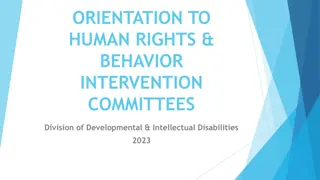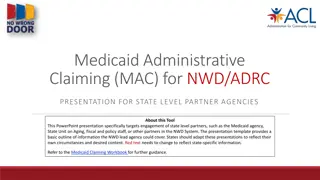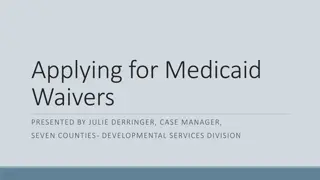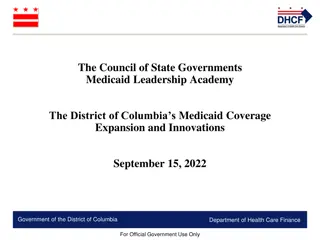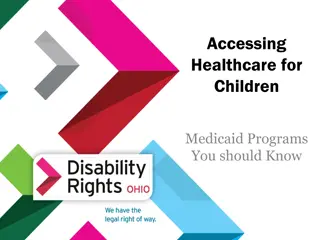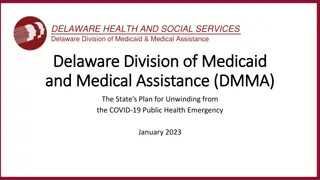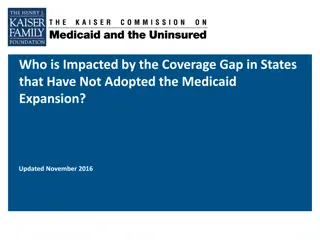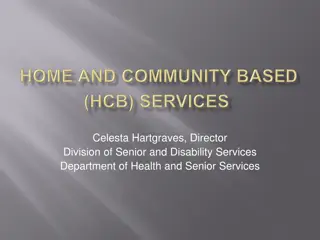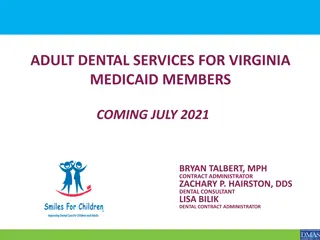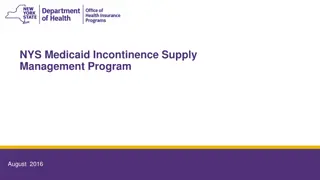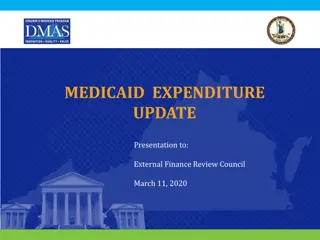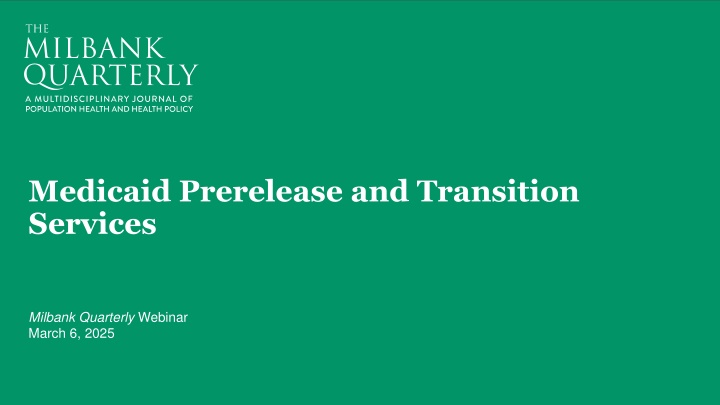
Medicaid Prerelease and Transition Services for Former Inmates
Explore the importance of Medicaid coverage for pre-release and transition services for former inmates, focusing on mortality rates post-release and eligibility criteria. Panelists discuss findings and implications for population health. Learn more about this critical topic.
Download Presentation

Please find below an Image/Link to download the presentation.
The content on the website is provided AS IS for your information and personal use only. It may not be sold, licensed, or shared on other websites without obtaining consent from the author. If you encounter any issues during the download, it is possible that the publisher has removed the file from their server.
You are allowed to download the files provided on this website for personal or commercial use, subject to the condition that they are used lawfully. All files are the property of their respective owners.
The content on the website is provided AS IS for your information and personal use only. It may not be sold, licensed, or shared on other websites without obtaining consent from the author.
E N D
Presentation Transcript
Medicaid Prerelease and Transition Services Milbank Quarterly Webinar March 6, 2025
Panelists Cameron Adams, Arizona Health Care Cost Containment System Administration (discussant) Sanjay Basu, Waymark Autumn Boylan, California Department of Health Care Services (discussant) Harold Pollack, The University of Chicago (moderator) WWW.MILBANK.ORG
Medicaid pre-release and transition services coverage Sanjay Basu MD PhD sanjay.basu@waymarkcare.org WWW.MILBANK.ORG
Context Medicaid traditionally covers only community-based inpatient hospitalizations Post-release mortality increases shortly after release, particularly in context of substance use Mortality Rates among Former Inmates of the Washington State Department of Corrections during the Study Follow-up (Overall) andAccording to 2-Week Periods after Release from Prison. Binswanger IA, Stern MF, Deyo RA, Heagerty PJ, Cheadle A, Elmore JG, Koepsell TD. Release from prison--a high risk of death for former inmates. N Engl J Med. 2007 Jan 11;356(2):157-65. doi: 10.1056/NEJMsa064115. WWW.MILBANK.ORG
How many people might be eligible? National Prisoner Statistics Census of Jails Jail Data Initiative Disease/condition prevalence versus civilian population? Survey of Prison Inmates Civilian: NHANES, NSDUH
Approach Eligibility: - Varied whether jail populations included, and for how long they were incarcerated (30-90d) before considered - Whether eligibility was conditional: e.g., behavioral health conditions, chronic conditions Methods - - - Smoothed population size estimates Omitted states with a combined jail and prison population reporting Survey sample weighting WWW.MILBANK.ORG
Findings Prison and jail releases relative to civilian Medicaid enrollment by state. The plot shows stacked bar charts of the yearly releases who may be eligible to Medicaid, relative to the size of the existing Medicaid population, divided into categories of shorter and longer-term jail stays, and state versus federal prison releasees, further subdivided by states that have versus have not expanded Medicaid as of June 2024. Chin ET, Liu YE, Ogbunu CB, Basu S. Population Health Implications of Medicaid Prerelease and Transition Services for Incarcerated Populations. Milbank Q. 2024 Dec;102(4):896-912.
Findings Prison and jail releases relative to civilian Medicaid enrollment by state. The plot shows stacked bar charts of the yearly releases who may be eligible to Medicaid, relative to the size of the existing Medicaid population, divided into categories of shorter and longer-term jail stays and state versus federal prison releases, further subdivided by states that have versus have not expanded Medicaid as of June 2024. Chin ET, Liu YE, Ogbunu CB, Basu S. Population Health Implications of Medicaid Prerelease and Transition Services for Incarcerated Populations. Milbank Q. 2024 Dec;102(4):896-912.
Findings Prevalence of select health conditions among the incarceratedpopulation. Health statuses include substance use disorder (SUD), severe mental illness (SMI), intellectual or developmental disorders (I/DD), any mental illness (AMI), or chronic conditions, and were selected based on eligibility considerations for state Medicaid waivers. Chin ET, Liu YE, Ogbunu CB, Basu S. Population Health Implications of Medicaid Prerelease and Transition Services for Incarcerated Populations. Milbank Q. 2024 Dec;102(4):896-912.
Key points Rural and smaller states would experience a disproportionately large proportion of their Medicaid populations to be eligible for pre-release and transition services if new Medicaid eligibility rules were broadly applied. Self-reported psychological distress was notably higher among incarcerated individuals compared to those currently on Medicaid. The prevalence of previously diagnosed chronic Hepatitis C and kidney disease were also much higher in the incarcerated population than the existing civilian Medicaid population. WWW.MILBANK.ORG
So many caveats and limitations Incomplete data on newly covered populations: Significant information gaps regarding the volume and needs of populations newly covered under Medicaid-funded pre- release and transition services. Survey methodology variations: Inherent differences in survey methodologies and questions limit direct comparability of prevalence estimates. Prison vs. jail populations: Notable differences between prison populations (assessed in the Survey of Prison Inmates) and jail populations (who often have different characteristics and disease prevalence). Fragmented health data: Historical data on health needs of incarcerated populations has been incomplete and fragmented. System coordination challenges: Data collection and sharing among correctional facilities, state healthcare entities, health plans, and providers remains problematic. Information bias: Differences in survey methodologies, participant recruitment, and data collection methods can introduce information bias. Estimation accuracy: Estimations of population characteristics, disease prevalence, and potential Medicaid- eligible re-entry population may not fully capture nuanced needs. Disease severity omission: Analysis does not capture disease severity; incarcerated populations may have more advanced stages of chronic diseases. Outdated substance use data: Substance use prevalence is likely higher than reported due to continuing increases in opioid use since the surveys were conducted. Policy evolution impact: Evolving policies and practices as states implement new waivers may affect the applicability and accuracy of findings over time. Take-up rate uncertainty: Limited research exists on enrollment take-up rates when people are enrolled prior to release, which may vary across states and subpopulations. Medicaid expansion differences: Non-expansion states may have different eligible populations for justice-involved waivers compared to expansion states.
Acknowledgements Thanks to Elizabeth Chin (Johns Hopkins), principal author, for the majority of work involved. Co-authors: Brandon Ogbunu (Yale), Yiran Liu (Stanford) Email if questions: sanjay.basu@waymarkcare.org WWW.MILBANK.ORG
Moderated Discussion and Q&A WWW.MILBANK.ORG
Thank you for listening WWW.MILBANK.ORG




